Best AI tools to Detect AI-Generated Content
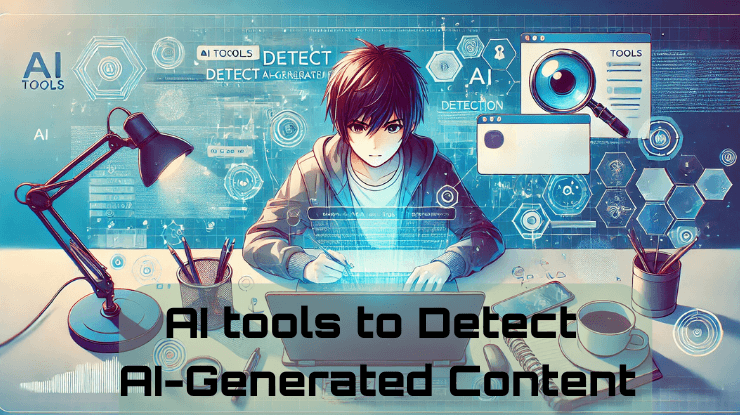
As artificial intelligence technology progresses, the ability to generate human-like text has raised significant concerns regarding the authenticity of written content. This has led to the emergence of various AI detection tools designed to identify whether a piece of text has been generated by an AI model. Here, we delve deeper into ten notable AI detection tools, exploring their usage instructions and key features.
If you are new to AI tools, check out our beginner’s guide to AI tools, and if you would like to increase your productivity using AI, we have something for you too!
- Originality.ai
- Hive
- Winston AI
- GPTZero
- Copyleaks
- ZeroGPT
- ContentDetector.AI
- Draft & Goal
- QuillBot
- InkforAll
-
Originality.ai
Originality.ai is specifically designed to serve the needs of content publishers, agencies, and writers, offering a robust solution for identifying AI-generated text in their work. Established in 2022, this innovative tool was developed in response to the increasing demand for reliable content verification, particularly as AI writing tools gained traction in various industries.
Users can choose between two detection models: Standard 2.0 and Turbo 3.0. The Standard model is suitable for those who are comfortable with minor AI editing in their text, while Turbo 3.0 is tailored for users with a zero-risk tolerance for any AI content. The tool is known for its impressive accuracy rates across various datasets, establishing it as one of the most reliable options available for content verification in today’s rapidly evolving digital landscape.
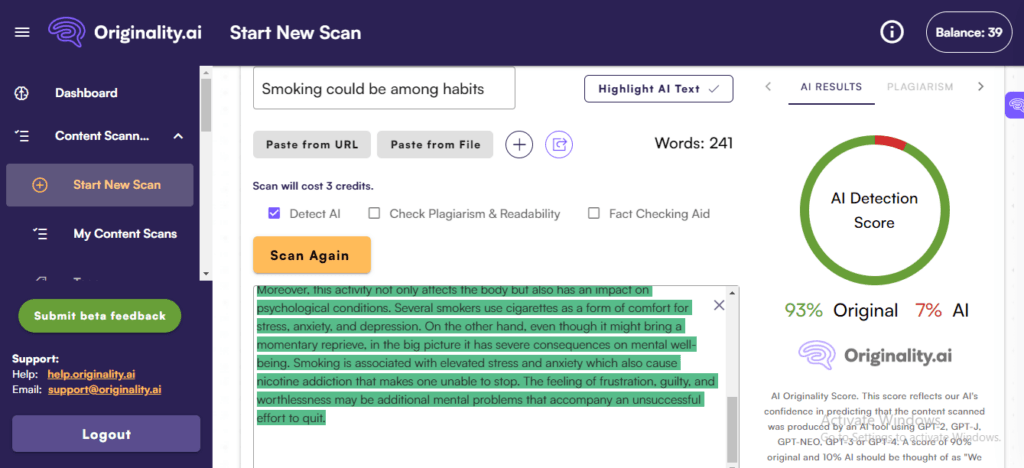
-
Hive
Hive is a versatile and multifaceted tool that was introduced in 2017, initially designed to offer creative solutions for content creators and marketers looking to streamline their workflow. Originally, Hive catered to the needs of professionals focused on producing and managing creative content. However, as generative AI technologies began to gain traction and pose new challenges in the digital landscape, Hive expanded its capabilities to include AI detection.
Users of Hive can easily upload various types of content directly onto its platform for analysis. One of Hive’s most notable strengths lies in its ability to analyze multiple types of media, distinguishing it from other AI detection tools that are often limited to text-based inputs. Additionally, Hive provides users with an in-depth breakdown of the specific AI model that likely generated the content.

-
Winston AI
Winston AI, launched in 2023, was specifically designed to address the growing concerns of educators and publishers regarding academic integrity amidst the increasing use of AI-generated content. Winston AI steps in to help institutions and individuals ensure that the content submitted is authentic. By simply inputting text into its interface, the tool quickly analyzes the content and highlights any sentences that are suspected of being generated by an AI model.
One of the tool’s standout features is its remarkable accuracy, boasting a detection rate of up to 99.98%. This high level of precision has made Winston AI a popular choice among academic institutions and publishers that need a reliable solution for maintaining the originality of work. Winston AI supports multiple languages, making it accessible to a global user base.

-
GPTZero
GPTZero, developed by Edward Tian in 2023, stands as one of the first dedicated tools created to detect outputs from generative models like ChatGPT. It was specifically designed for educators and students to safeguard academic integrity. Its intuitive interface allows users to paste their text directly into the tool, which then evaluates the content using a combination of innovative metrics.
One of GPTZero’s key features is its analysis of “burstiness,” or the variation in sentence length, and “perplexity,” which measures the unpredictability of text. These factors help the tool determine whether the writing aligns with typical human patterns or if it shows characteristics common to AI-generated text. This focus on both detection and analysis has drawn significant attention from educators and researchers, making GPTZero a valuable tool in the fight to maintain authenticity and originality in academic writing.
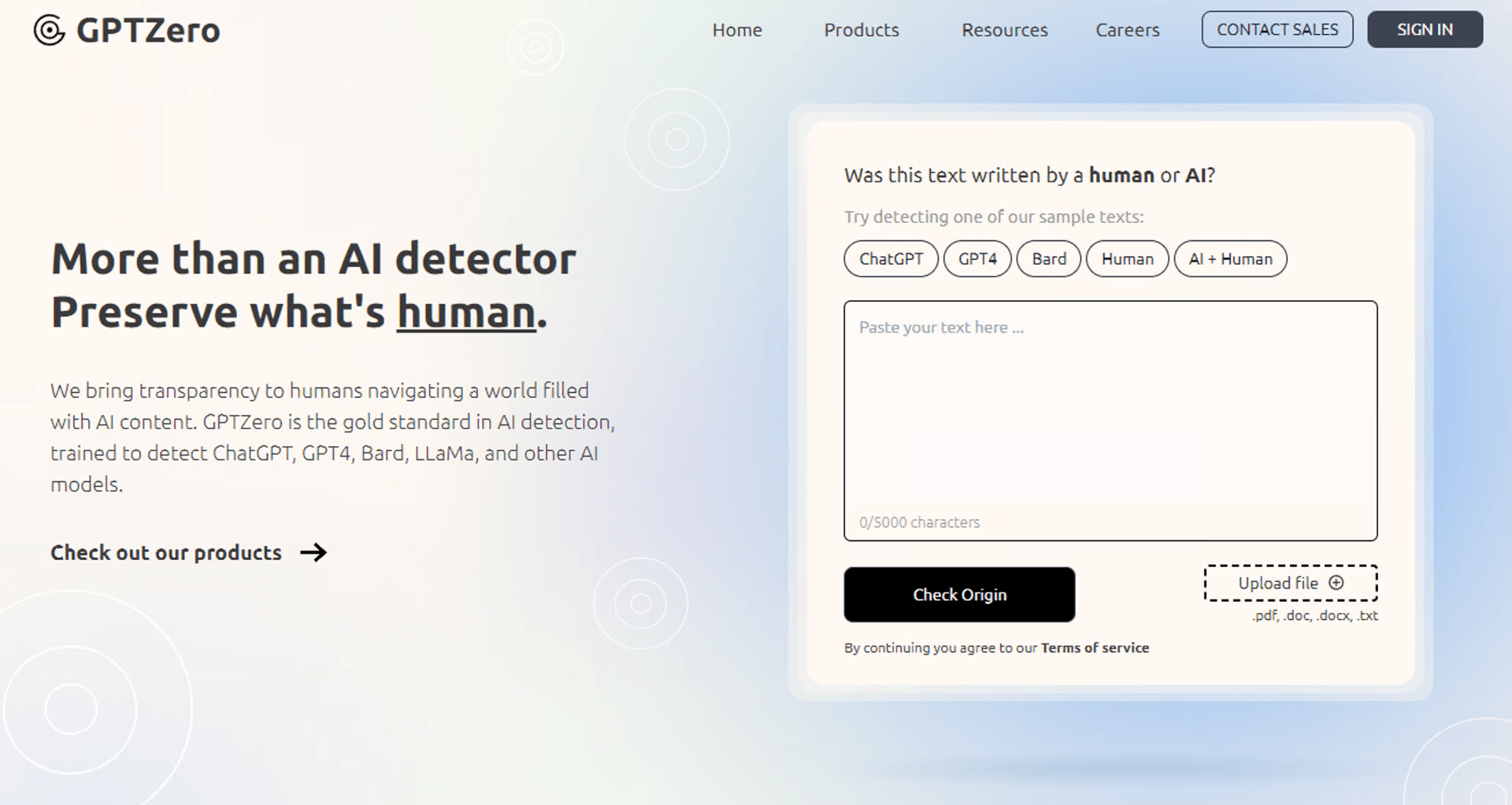
-
Copyleaks
Copyleaks was originally launched in 2015 as a plagiarism detection service, but as generative AI models became more common, the platform swiftly adapted to include robust capabilities for identifying AI-generated content. Users can easily upload documents or paste text directly into the platform, where it analyzes the material for patterns that suggest AI involvement. The tool’s sophisticated scanning process is designed to detect subtle deviations from typical human writing patterns, with an accuracy rate exceeding 99%.
In addition to its powerful AI detection capabilities, Copyleaks is highly versatile, supporting over 30 languages, making it suitable for users around the world. Beyond just detecting AI-generated content, Copyleaks continues to serve its original purpose by identifying plagiarized content, offering a dual-purpose tool that meets the growing need for content authenticity and originality in an increasingly digital and AI-driven landscape.
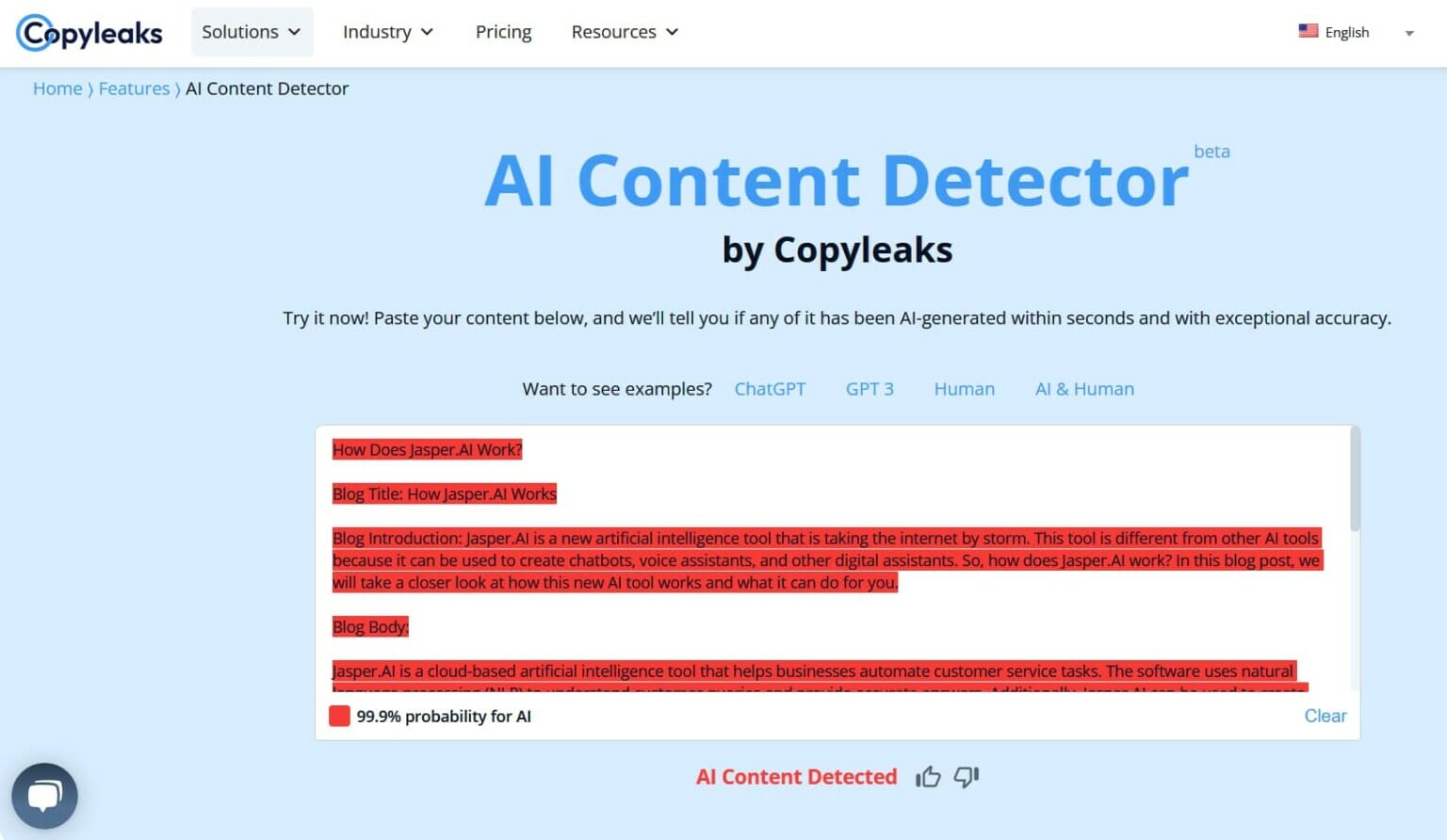
-
ZeroGPT
ZeroGPT is a recent addition to the landscape of AI detection tools, specifically designed to identify AI-generated content across multiple languages. It allows users to upload multiple files simultaneously or paste text directly into its user-friendly interface for thorough analysis. ZeroGPT utilizes its advanced proprietary DeepAnalyze™ technology.
In addition to its robust detection capabilities, ZeroGPT offers comprehensive reporting options that enable users to download PDF reports outlining the results of their analysis. This feature provides a convenient way for users to retain records of their findings, making it particularly useful for educators, researchers, and content creators who need to document their assessments.
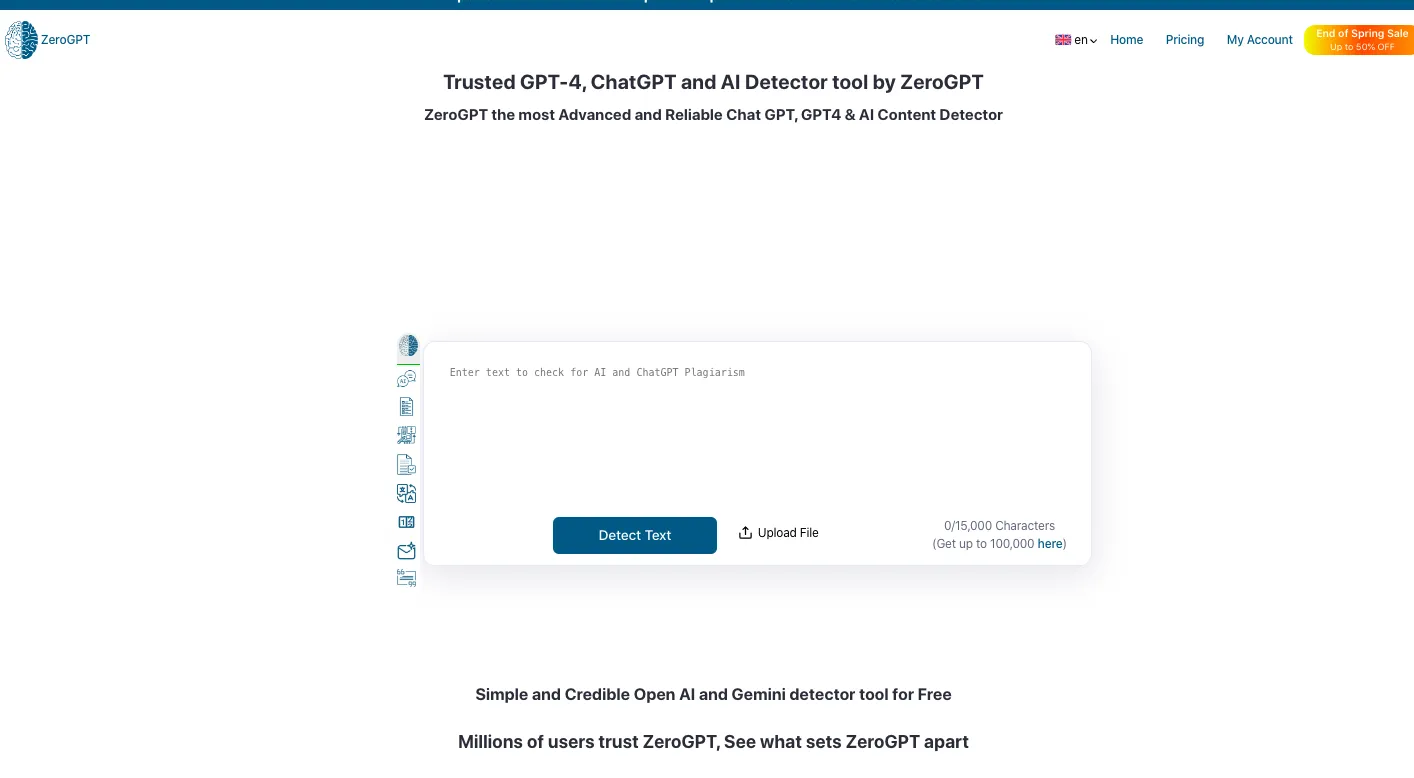
-
ContentDetector.AI
ContentDetector.AI was developed as a free and accessible tool designed to assist users in quickly identifying AI-generated content. Since its launch, it has gained significant popularity among educators, students, and content creators, thanks to its user-friendly interface and straightforward functionality.
The tool’s ability to provide rapid assessments without any cost barriers has made it a go-to option for many individuals and organizations looking to verify the originality of their writing. Its straightforward design enables users to easily understand the results, making it particularly beneficial for those who may not have extensive technical knowledge.
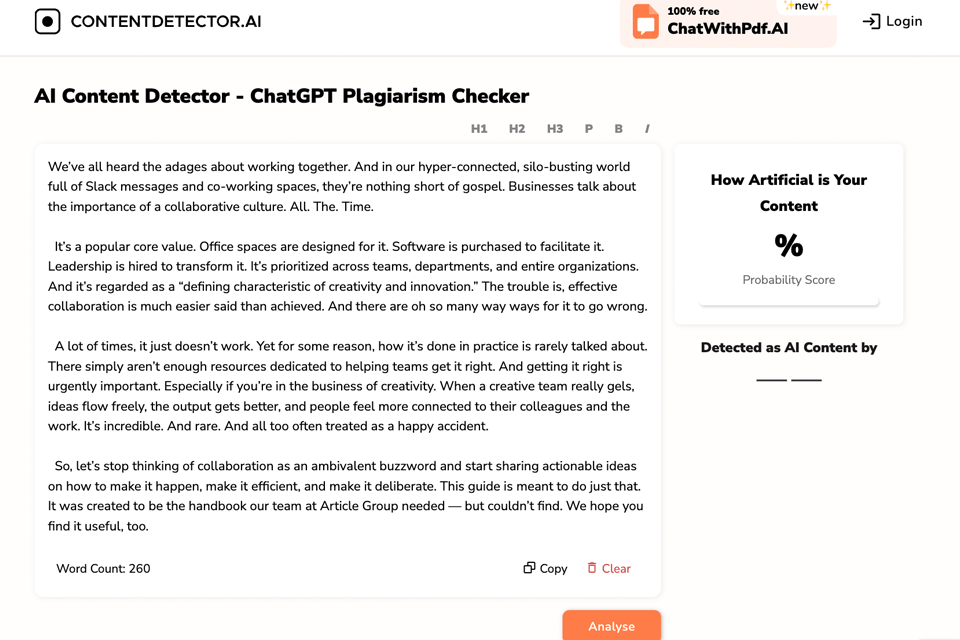
-
Draft & Goal
Draft & Goal was created as a cutting-edge platform designed to detect content generated by AI, with a particular focus on providing robust verification systems for organizations. Draft & Goal meets this need by allowing users to input their text into the platform, where it meticulously scans for subtle “fingerprints” left by different AI models during the content generation process.
One of the platform’s key strengths is its accessibility, as it offers free usage without any cost barriers, making it an attractive option for businesses and users who require frequent and large-scale content verification. Draft & Goal is particularly well-suited for organizations needing bulk scanning capabilities, ensuring that multiple pieces of content can be checked efficiently and accurately. The platform provides a vital service in maintaining the integrity and originality of written content in a variety of professional and corporate settings.
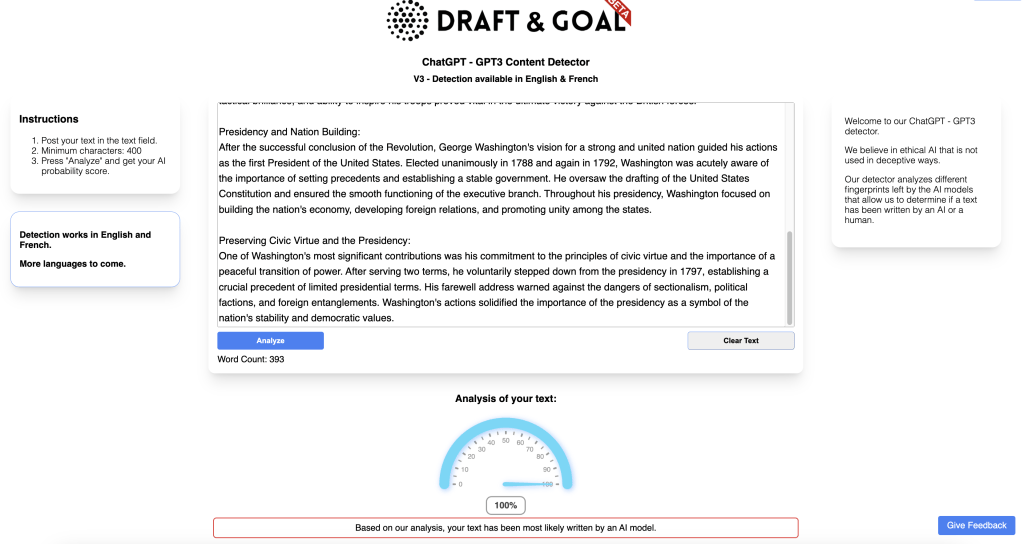
-
QuillBot
QuillBot initially launched as a paraphrasing tool, helping users rephrase and refine their text, but it has since expanded its range of functionalities to meet the growing demand for detecting AI-generated content. In response to rising concerns over originality in writing, QuillBot introduced an AI detection feature that allows users to paste their text into its interface for analysis.
QuillBot caters to a wide range of users by offering both free and premium versions, each with different levels of functionality. While the free version provides essential tools for content analysis, the premium version unlocks more advanced features, giving users greater control and customization. Known for its high detection accuracy rates, QuillBot has become a trusted resource for students, educators, and professionals who want to ensure their writing is original and not AI-generated.
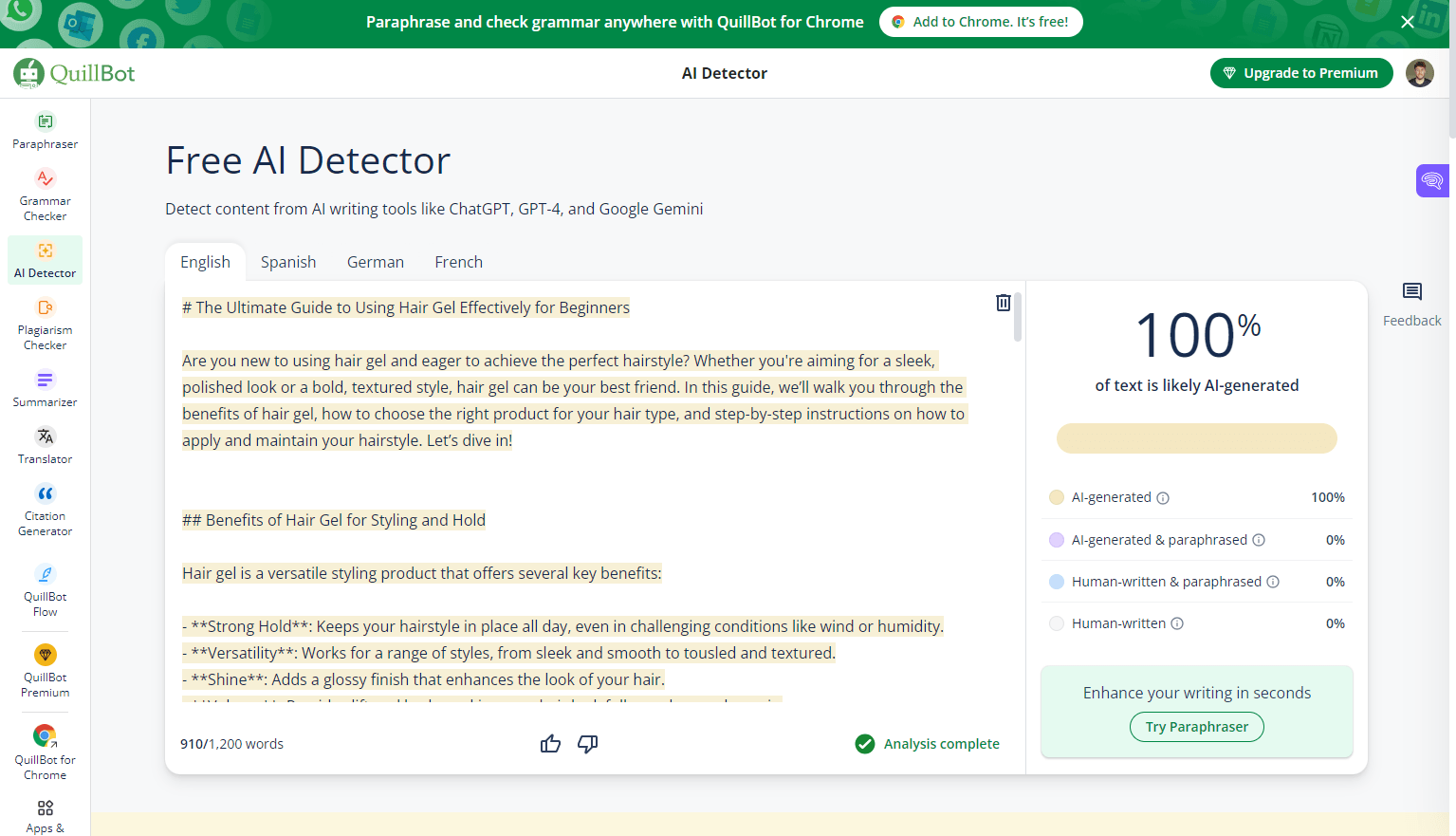
-
InkforAll
InkforAll was developed as a comprehensive writing assistant designed to enhance the overall writing process, offering features like SEO optimization to help users create content that ranks well in search engines. Recently, the platform expanded its capabilities to include AI-generated content detection, addressing the growing concerns about the authenticity of digital writing. Users can easily paste their content into InkforAll’s platform, where the tool analyzes it against established patterns of human writing versus machine-generated text.
What makes InkforAll particularly appealing is its emphasis on providing a seamless, user-friendly experience for writers who require both writing assistance and content verification. By integrating tools that help with content creation, such as SEO optimization, alongside its AI detection feature, InkforAll delivers a well-rounded solution for individuals and professionals alike. This dual functionality makes it an attractive option for anyone concerned with originality in writing.
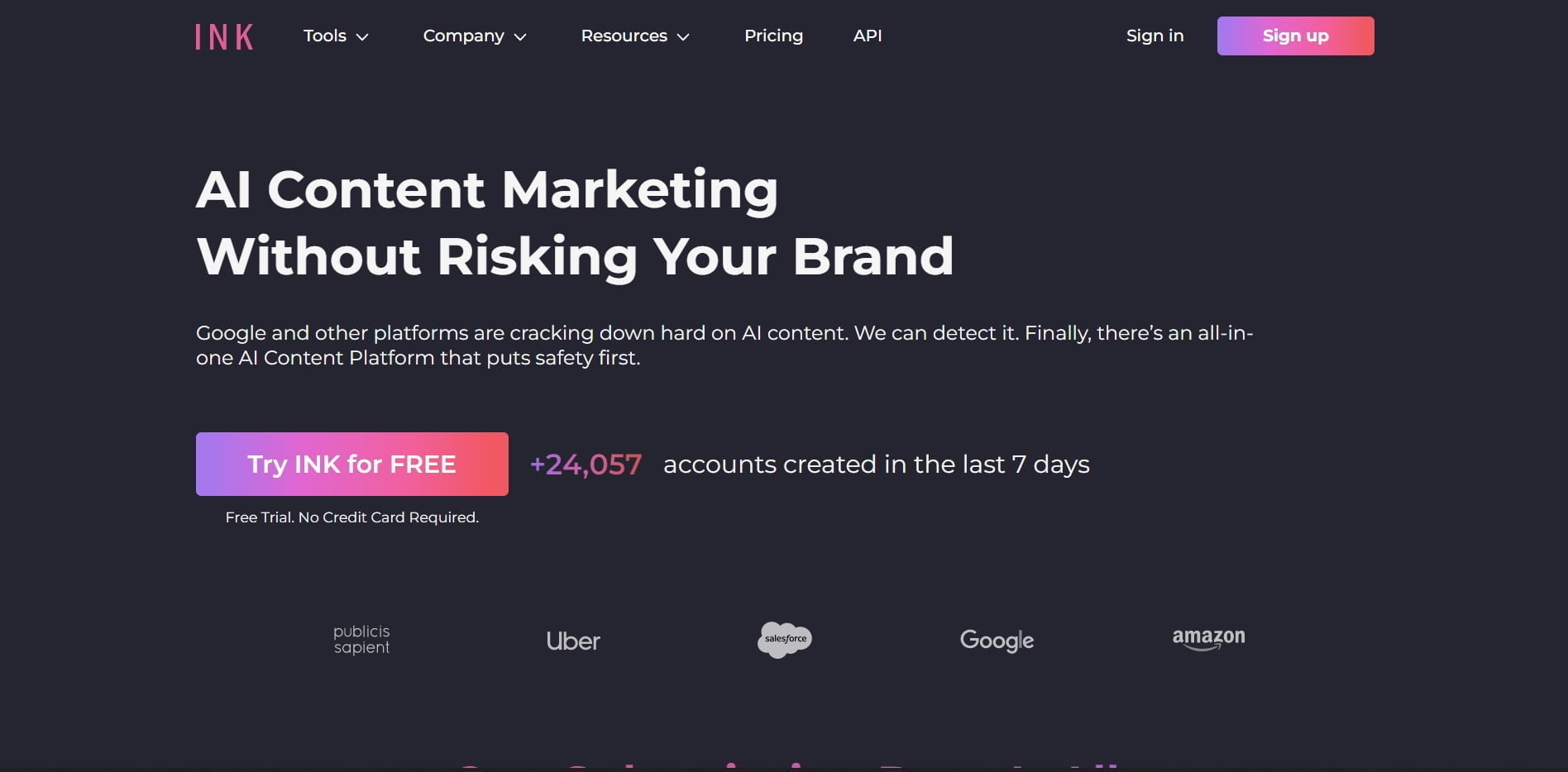
These ten tools represent some of the best options available today for detecting AI-generated content across various contexts—from academic integrity checks in educational settings to ensuring originality in professional writing environments. Each tool offers unique features tailored toward different user needs while contributing significantly to maintaining authenticity in written communications amidst the rapid advancement of artificial intelligence technologies.
If you would like to use an AI tool specific to your industry, check out our article on the best AI tools for each industry.














